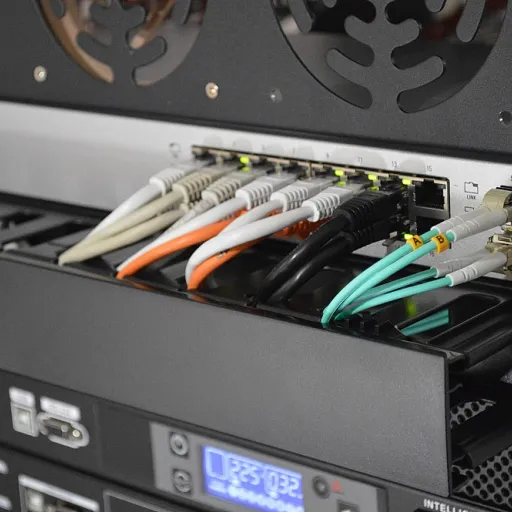
Understanding 5G Network Slicing
Decoding the Concept of 5G Network Slicing
5G network slicing is a revolutionary technology that allows the creation of multiple virtual networks on a single physical infrastructure. This architecture overview provides a flexible and efficient way to manage network resources, catering to diverse service requirements. By leveraging software-defined networking (SDN) and network functions virtualization (NFV), network slicing enables the dynamic allocation of resources, ensuring optimal network performance and low latency.
The Architecture Behind Network Slicing
At its core, network slicing involves the segmentation of a network into distinct slices, each tailored to specific needs. This slicing implementation allows for the customization of network services, whether for mobile broadband, IoT applications, or critical communications. Each network slice operates independently, with its own set of resources and management protocols, ensuring that the performance of one slice does not impact others.
Implementation and Management of Network Slices
Implementing network slices requires a robust architecture that integrates both SDN and NFV technologies. This combination facilitates the creation of virtual networks that can be easily managed and adjusted in real-time. The management of these slices is crucial, as it involves monitoring network performance and ensuring security across all slices. As the demand for diverse services grows, the ability to efficiently manage these virtual networks becomes increasingly important.
Applications and Benefits of Network Slicing
Network slicing offers numerous benefits, particularly in the realm of mobile networks. It allows for the efficient use of resources, reducing costs and enhancing the delivery of services. Additionally, it supports the implementation of new technologies and services, such as IoT and mobile broadband, by providing the necessary infrastructure and flexibility. For more insights on navigating IT security compliance requirements, you can explore this comprehensive guide.
Security Challenges in 5G Network Slicing
Challenges in Securing 5G Network Slices
As we delve into the realm of 5G network slicing, it's crucial to understand the unique security challenges that arise. The architecture of 5G networks, with its slicing technology, introduces complexities that traditional security measures may not adequately address. Each network slice, acting as a virtual network, requires tailored security protocols to ensure data integrity and privacy.
Dynamic and Complex Architecture
The dynamic nature of 5G network slicing means that slices can be created, modified, and deleted in real-time. This flexibility, while beneficial for service delivery, poses significant security risks. The architecture overview of these networks reveals that each slice can have different security requirements based on its function, whether it's for IoT devices, mobile broadband, or other services. Implementing consistent security across these varied slices is a formidable challenge.
Management and Isolation Concerns
Effective management of network slices is critical to maintaining security. Each slice must be isolated to prevent unauthorized access and data breaches. However, the implementation of such isolation in a single physical infrastructure can be complex. The core network must ensure that the security of one slice does not compromise another, necessitating robust management strategies.
Software-Defined Networking and NFV
With the integration of software-defined networking (SDN) and network function virtualization (NFV), the security landscape of 5G slices becomes even more intricate. These technologies, while enhancing network performance and flexibility, also introduce new attack vectors. The design and implementation of security measures must evolve to address these potential vulnerabilities.
For a deeper dive into how compliance software can enhance security in complex networks, consider exploring enhancing supply chain efficiency with compliance software.
Innovative Security Solutions for 5G Slices
Advanced Security Mechanisms for Network Slices
As 5G technology continues to evolve, securing network slices becomes increasingly crucial. The architecture of 5G networks, with its dynamic and flexible nature, demands innovative security solutions to protect the integrity and confidentiality of data. These solutions must address the unique challenges posed by network slicing, such as the isolation of slices and the management of resources across a single physical infrastructure.
Utilizing Software-Defined Networking (SDN) and Network Functions Virtualization (NFV)
One of the most promising approaches to enhance security in 5G network slices is the integration of Software-Defined Networking (SDN) and Network Functions Virtualization (NFV). These technologies allow for a more agile and programmable network architecture, enabling real-time adjustments to security policies and configurations. By leveraging SDN and NFV, network operators can implement tailored security measures for each slice, ensuring that specific requirements are met without compromising overall network performance.
Implementing Zero Trust Architecture
Another innovative solution is the adoption of a Zero Trust Architecture. This approach assumes that threats can originate from both outside and inside the network, and therefore, no entity is automatically trusted. By implementing Zero Trust principles, each network slice can be secured with stringent access controls and continuous monitoring, reducing the risk of unauthorized access and potential breaches.
Enhancing Security Through AI and Machine Learning
Artificial Intelligence (AI) and Machine Learning (ML) are also playing a pivotal role in enhancing security for 5G network slices. These technologies can analyze vast amounts of data in real-time, identifying anomalies and potential threats more efficiently than traditional methods. By integrating AI and ML into the security framework, network operators can proactively detect and mitigate risks, ensuring a robust defense against evolving cyber threats.
For a deeper understanding of how interface design impacts networked communication, you can explore the evolution of interface design in networked communication.
Impact on Software Development
Software Development in the Era of 5G Network Slicing
The advent of 5G network slicing has ushered in a transformative period for software development. As we delve into the intricacies of this technology, it becomes evident that the impact on software is profound and multifaceted. The architecture of 5G networks, with its ability to create multiple virtual networks on a single physical infrastructure, demands a new approach to software design and implementation.
One of the key changes is the shift towards software-defined networking (SDN) and network functions virtualization (NFV). These technologies enable dynamic management of network slices, allowing for tailored services that meet specific requirements. For developers, this means creating applications that can seamlessly integrate with these virtual networks, ensuring optimal performance and security.
Challenges and Opportunities
With the flexibility of network slicing comes the challenge of maintaining security across diverse slices. Developers must prioritize security in their design, implementing robust protocols that safeguard data as it traverses the network. This requires a deep understanding of the core network architecture and the potential vulnerabilities that may arise.
Moreover, the low latency and high-speed capabilities of 5G open up new possibilities for Internet of Things (IoT) applications and mobile broadband services. Software solutions must be capable of handling real-time data processing and management, ensuring that the user experience is both seamless and secure.
Innovative Approaches to Software Design
To harness the full potential of 5G network slicing, developers are exploring innovative approaches to software design. This includes leveraging artificial intelligence and machine learning to enhance network performance and automate slice management. By integrating these technologies, software can adapt in real-time to changing network conditions, providing a more resilient and efficient service.
In conclusion, the impact of 5G network slicing on software development is significant, driving innovation and challenging developers to rethink traditional approaches. As the technology continues to evolve, staying informed and adaptable will be key to thriving in this dynamic landscape.
Case Studies: Real-World Applications
Real-World Implementations of 5G Network Slicing
As the 5G network slicing technology continues to evolve, its real-world applications are becoming increasingly evident. Various industries are leveraging this technology to optimize their operations and enhance service delivery. Let's explore some notable examples where 5G network slicing has been successfully implemented.
Smart Manufacturing
In the realm of smart manufacturing, 5G network slicing plays a crucial role in facilitating seamless communication between IoT devices and the core network. By creating dedicated network slices, manufacturers can ensure low latency and high reliability, essential for real-time monitoring and control of production lines. This architecture overview highlights how network slicing can enhance operational efficiency and reduce downtime.
Healthcare Services
The healthcare sector is another area where 5G network slicing is making a significant impact. By utilizing virtual networks, healthcare providers can offer remote consultations and real-time patient monitoring. The slicing network allows for secure and efficient data transmission, ensuring that sensitive patient information is protected while maintaining high network performance.
Enhanced Mobile Broadband
Mobile broadband services have greatly benefited from the implementation of 5G network slices. By allocating specific slices for high-demand areas, service providers can offer improved connectivity and reduced congestion. This approach not only enhances user experience but also optimizes the use of available infrastructure, demonstrating the potential of slicing implementation in mobile networks.
Automotive Industry
The automotive industry is exploring the use of 5G network slicing to support autonomous vehicles and connected car services. By leveraging software-defined networks (SDN) and network function virtualization (NFV), automotive companies can create dedicated slices for vehicle-to-everything (V2X) communication. This ensures low latency and high reliability, crucial for the safe operation of autonomous vehicles.
These case studies illustrate the diverse applications of 5G network slicing across different sectors. As the technology matures, we can expect to see even more innovative uses that will transform industries and redefine how services are delivered.
Future Trends in 5G Security
Emerging Security Paradigms in 5G Networks
The future of 5G network security is poised to evolve rapidly, driven by the need to address the unique challenges posed by network slicing. As we delve deeper into the architecture and management of these slices, several trends are emerging that will shape the security landscape.
Integration of AI and Machine Learning
Artificial intelligence (AI) and machine learning (ML) are becoming integral to enhancing security measures within 5G networks. These technologies offer the ability to analyze vast amounts of data in real-time, enabling the detection of anomalies and potential threats more efficiently. By integrating AI and ML, network operators can improve the security of their infrastructure, ensuring that each slice is protected against evolving threats.
Enhanced Network Slicing Management
As network slicing becomes more prevalent, the management of these slices will require advanced tools and strategies. Software-defined networking (SDN) and network functions virtualization (NFV) are crucial in this regard, providing the flexibility needed to dynamically allocate resources and maintain robust security protocols. This approach not only enhances the performance of the core network but also ensures that security measures are consistently applied across all virtual networks.
Focus on IoT Security
The proliferation of IoT devices within 5G networks presents unique security challenges. As more devices connect to the network, the potential attack surface expands, necessitating a comprehensive approach to security. Future trends indicate a shift towards implementing security measures at the device level, ensuring that each IoT device within a network slice is secure from the outset.
Collaboration and Standardization
To effectively address the security challenges of 5G network slicing, collaboration among industry stakeholders is essential. Standardization efforts are underway to create unified security protocols that can be applied across different networks and slices. This collaborative approach will help in developing a cohesive security framework that can adapt to the diverse needs of mobile broadband services and other applications.
As we continue to explore the intricacies of 5G network slicing, it's clear that the future of software development in this domain will be heavily influenced by these emerging security trends. By staying ahead of these developments, stakeholders can ensure that their networks remain secure and resilient in the face of new challenges.















